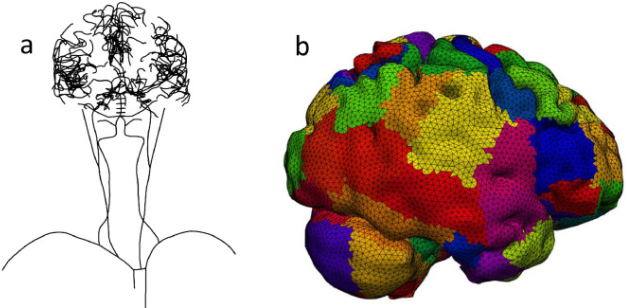Raymond M. Padmos, Nerea Arrarte Terreros, Tamás I. Józsa, Gábor Závodszky, Henk A. Marquering, Charles B.L.M. Majoie and Alfons G. Hoekstra have published a new paper on modelling the leptomeningeal collateral circulation in Medical Engineering & Physics
The leptomeningeal collateral circulation plays an important role during acute ischaemic stroke. It ensures sustained blood flow to brain tissue at risk during a stroke, thereby reducing cell death and brain tissue injury. However, the collateral circulation is highly variable among patients. In this paper, we present a computational model of the leptomeningeal collateral circulation. A circulation model is created using a combination of literature (population averages), digital reconstructions and statistical scaling laws. An explicit representation of the pial surface network including the leptomeningeal collateral circulation is used to capture collateral flow after stroke onset. Variation of the collateral circulation is captured by a collateral vessel probability.
Blood flow and pressure are simulated using a one-dimensional (1D) steady state blood flow model. Contrast transport through the circulation is also simulated, using an upwind finite-difference model for linear advection. We compare our model with dynamic computed tomography angiography (CTA) measurements performed in AIS patients. The model is able to reproduce the measurements in stroke patients. In addition, the model is able to capture the variability in collateral flow including the effect of retrograde flow. Modelling the leptomeningeal collateral circulation and its variation could lead to better estimates of infarct volume and patient outcome.
Link to the paper: https://doi.org/10.1016/j.medengphy.2021.03.003

